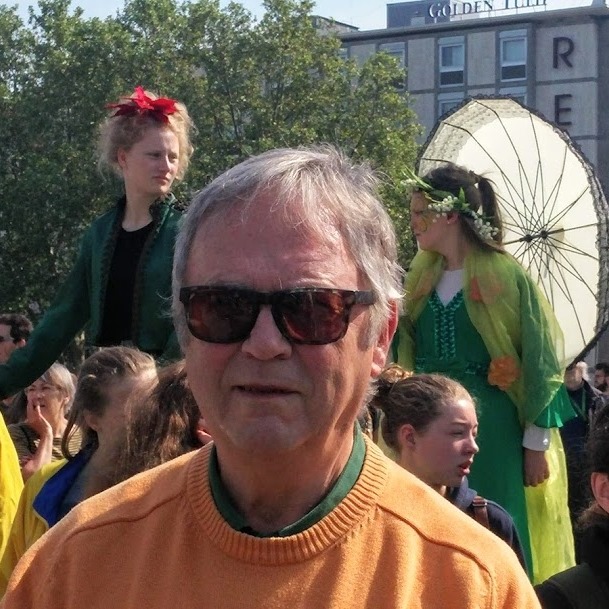Now, in the 1960s, Teilhard's most controversial book was The Phenomenon of Man, translated into English by Bernard Wall (Harper & Row, 1959).
In the new 500-page 2024 book The Invention of Prehistory: Empire, Violence, and Our [Modern Western] Obsession with Human Origins (Liveright), New York University's Stefanos Geroulanos devotes an entire chapter (pp. 249-261; also see pp. 263, 302, and 349) to discussing the 1959 version of Teilhard's key book The Phenomenon of Man.
For a lively review of Geroulanos' new 500-page 2024 book, see Jennifer Szalai's article titled "Savages! Innocents! Sages! What Do We Really Know About Early Humans?: In 'The Invention of Prehistory,' the historian Stefanos Geroulanos argues that many of our theories about our remote ancestors tell us more about us than them" (dated April 10, 2024):
Now, for all practical purposes, pre-history = pre-literate (i.e., before the phonetic alphabet emerged in ancient Greek and in ancient Hebrew culture) = what Ong refers to as primary orality and as primary oral culture (in contradistinction from what he refers to as secondary orality and as secondary oral culture - our contemporary culture in which communications media that accentuate sound).
I have discussed Ong's account of secondary orality in my essay "Secondary Orality and Consciousness Today" in the 1991 anthology Media, Consciousness, and Culture: Explorations of Walter Ong's Thought, edited by Bruce E. Gronbeck, Thomas J. Farrell, and Paul A. Soukup (Sage Publishing, pp. 194-209).
As to primary orality, Ong never tired of touting the classicist Eric A. Havelock's perceptive 1963 book Preface to Plato (Belknap Press of Harvard University Press). In it, Havelock refers to what he refers to as the Homeric mentality - for Ong, of primary orality (before the emergence of phonetic alphabetic literacy in ancient Greek culture - as involving what he characterizes as imagistic thinking. By contrast with the imagistic thinking of the Homeric mentality, the philosophical mentality of Plato is more abstract.
Ong's 1964 review of Havelock's 1963 book is reprinted in An Ong Reader: Challenges for Further Inquiry, edited by Thomas J. Farrell and Paul A. Soukup (Hampton Press, 2002, pp. 309-312).
New York University's Neil Postman (1931-2003; Ed.D., Teacher College, Columbia University, 1955) discussed "the image and the word" in his landmark book Amusing Ourselves to Death: Public Discourse in the Age of show Business (Viking, 1985) - but without explicitly adverting to Havelock's discussion of imagistic thinking in his 1963 book.
Postman says, "That the image and the word have different functions, work at different levels of abstraction, and require different modes of response will not come as a new idea to anyone. What was new in the mid-nineteenth century was the sudden and massive intrusion of the photograph and other inconographs into the symbolic environment. This event is what Daniel Boorstin in his pioneering book, The Image, calls 'the graphic revolution.' By this phrase, Boorstin means to call attention to the fierce assault on language made by forms of mechanically reproduced imagery that spread unchecked throughout American culture - photographs, prints, posters, drawings, advertisements. I choose the word 'assault' deliberately here, to amplify the point implied in Boorstin's 'graphic revolution.' The new imagery, with photography at its forefront, did not merely function as supplement to language, but bid to replace it as our dominant means for construing, understanding, and testing reality. What Boorstin implies about the graphic revolution, I wish to make explicit here: The new focus on the image undermined traditional definitions of information, of news, and, to a large extent, of reality itself" (p. 74).
Subsequently, Postman says, "In The Image, Boorstin calls the major creation of the graphic revolution the 'pseudo-event,' by which he means an event specifically staged to be reported - like the press conference, say" (p. 76).
In my estimate, Donald J. Trump excels in producing pseudo-events.
For a perceptive profile of Trump, see the American psychiatrist and psychoanalyst Justin A. Frank's 2018 book Trump on the Couch: Inside the Mind of the President (Avery/ Penguin Random House).
Now, Postman continues: "I mean to suggest here that a more significant legacy of the telegraph and the photograph may be the pseudo-context. A pseudo-context is a structure invented to give fragmented and irrelevant information a seeming use. But the use the pseudo-context provides is not action, or problem-solving, or change. It is the only use left for information with no genuine connection to our lives. And that, of course, is to amuse. The pseudo-context is the last refuge, so to say, of a culture overwhelmed by irrelevance, incoherence, and impotence" (p. 76; his italics).
Thus, what Ong refers to as our contemporary secondary oral culture happens also to include a kind of variation, as it were, on what Havelock refers to as imagistic thinking in the Homeric mind (which Ong understands to mean the primary oral mind).
For Ong, television is one example of the communications media that accentuate sound. However, television also has a visual component. By the 1960s, television sets were in most American homes - with their mix of what Postman refers to as the "different functions" of "the image and the word" in what Ong refers to as secondary orality. However, in what Havelock refers to as the Homeric mentality (of what Ong refers to as primary orality) words themselves function to produce not only sounds but also what Havelock refers to as imagistic thinking. We can assume that what Ong refers to as secondary orality resonates in the collective unconscious with memories of pre-literate primary orality and its kind of imagistic thinking (in Havelock's terminology).
Next Page 1 | 2 | 3 | 4 | 5 | 6 | 7 | 8 | 9
(Note: You can view every article as one long page if you sign up as an Advocate Member, or higher).





